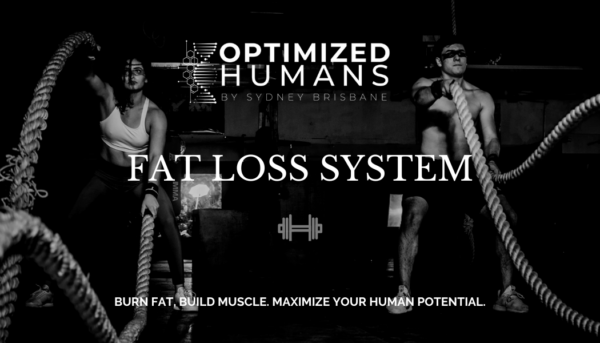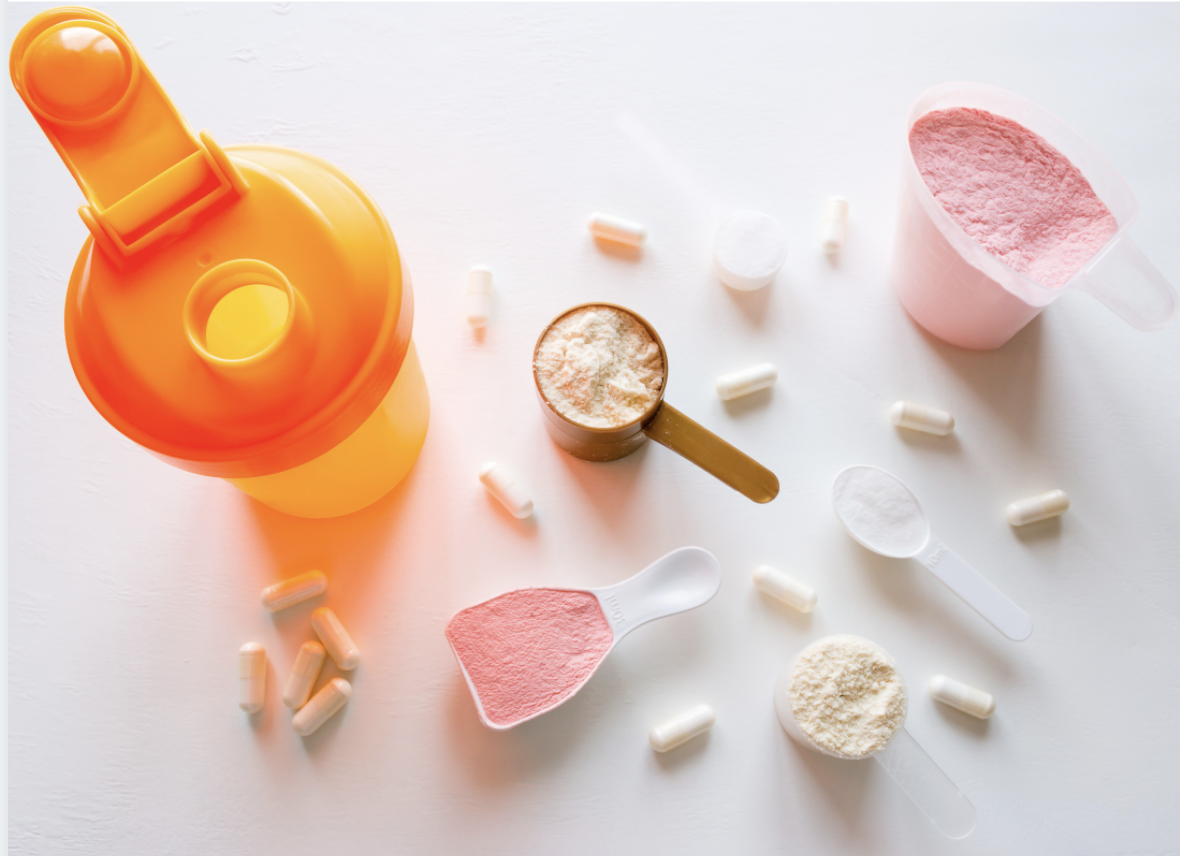
Introduction
The holiday season is often synonymous with joy and celebration, but it can also bring stress, fatigue, and emotional strain. Whether it’s managing expectations or juggling responsibilities, staying mentally centered is crucial. This blog explores how mindfulness and simple practices can support your mental well-being during this busy season.
Why the Holidays Can Be Stressful
The holidays are full of activities, from gift shopping to family gatherings, which can be overwhelming. Financial pressures, travel plans, and high expectations can add to the stress, affecting both your mental and physical health.
Mindfulness Techniques for Holiday Stress
- Practice Gratitude: Take time each day to reflect on things you’re thankful for.
- Breathe Deeply: Engage in breathing exercises to calm your mind and reduce stress.
- Set Boundaries: Say no to activities that overextend your energy or resources.
- Stay Active: Exercise is a powerful tool for stress relief and mental clarity.
Closing Thoughts
The holidays are a time to reconnect with what truly matters. Prioritizing your mental health ensures you can fully enjoy the season and start the new year refreshed.
Call to Action: Optimize your mind and body with the Optimized Humans App. Sign up today using code NEWYEARFIT25 for exclusive holiday savings.
Alcohol: The Positive and Negative Effects on Your Body and Mind
Alcohol plays a significant role in many social situations, and while it’s common to enjoy a drink with friends, it’s important to understand both the positive and negative effects it can have on your body, mind, and long-term health. Let’s break down the pros and cons of alcohol consumption so you can make informed choices.
The Positive Side of Alcohol
In moderation, alcohol has been associated with some potential benefits:
- Social Bonding: Alcohol often serves as a social lubricant, helping people relax and connect in social situations.
- Heart Health (in moderation): Some studies suggest that moderate consumption of certain types of alcohol, such as red wine, may have benefits for heart health due to the presence of antioxidants like resveratrol.
- Relaxation: A glass of wine or beer can help you unwind after a long day, reducing stress levels temporarily.
The Negative Side of Alcohol
While moderate drinking can have some perks, alcohol consumption also has significant downsides, especially when consumed regularly or in larger amounts.
- Cellular Damage: Alcohol is toxic to cells, particularly those in the liver. Chronic drinking can lead to liver damage, cirrhosis, and other serious conditions.
- Premature Aging: Alcohol dehydrates your body and depletes essential nutrients, which can accelerate aging, particularly in your skin. This leads to wrinkles, dullness, and other signs of premature aging.
- Cognitive Impairment: Alcohol affects brain cells and neurotransmitters, leading to slower reaction times, memory problems, and difficulty concentrating.
- Addiction Potential: Even casual drinking can develop into dependency over time, and alcohol addiction can have a profound negative impact on every aspect of life.
Alcohol may offer short-term benefits in social and emotional contexts, but the long-term consequences on your health and well-being are far more significant. Understanding the full impact of alcohol can help you make better choices for your body and mind.
Ready to take your health to the next level? With Optimized Humans, you can access personalized workout and nutrition plans, support for your wellness goals, and a community to keep you motivated. Sign up today and receive a special discount on your membership by mentioning this blog! Start your Sober October challenge with us, and take the first step towards a fitter, healthier, and more optimized you.


Let’s face it embarking on a “diet” (a word I hate using because of the stigma, I prefer clean or healthy meal plan/planning) journey often means paying close attention to macronutrients—proteins, fats, and carbohydrates—that fuel our bodies. Even seasoned dieters can make common mistakes when it comes to balancing these essential nutrients. Let’s dive into spoon and fork into the most frequent macro mistakes and how to avoid them.
1. Overemphasizing Protein Intake
The Mistake: While protein is crucial for muscle repair and growth, overemphasis on it can lead to neglecting other essential nutrients. Many experienced dieters fall into the trap of consuming too much protein compared to a healthy balance, believing it will lead to greater muscle gain or fat loss.
The Fix: According to the Dietary Guidelines for Americans, the recommended dietary allowance (RDA) for protein is 46 grams per day for women and 56 grams per day for men. Instead of focusing solely on protein, ensure you’re getting a balanced intake of all macronutrients. A good rule of thumb is to distribute your daily calorie intake to about 10-35% protein, 45-65% carbohydrates, and 20-35% fats.
***Personal Tip (1 gram per pound of total bodyweight, or 1 gram per pound of goal bodyweight)
2. Neglecting Carbohydrates
The Mistake: Carbohydrates often get a bad rap in diet culture. Many dieters, even experienced ones, may cut carbs drastically, thinking it will speed up weight loss. However, this can lead to energy slumps and nutrient deficiencies.
The Fix: Carbohydrates are the body’s primary energy source. The Institute of Medicine recommends that 45-65% of your daily calories come from carbohydrates. Focus on consuming complex carbohydrates such as whole grains, vegetables, and fruits, which provide sustained energy and essential nutrients.
3. Ignoring the Importance of Fats
The Mistake: In an effort to reduce calorie intake, some dieters cut out fats almost entirely. This can be detrimental, as fats are essential for hormone production, brain health, and the absorption of fat-soluble vitamins (A, D, E, and K).
The Fix: Healthy fats should comprise 20-35% of your daily calorie intake. Prioritize sources of unsaturated fats such as avocados, nuts, seeds, and olive oil. These not only provide energy but also support overall health and well-being.
4. Misjudging Portion Sizes
The Mistake: Even when focusing on macros, portion control can be a stumbling block. Overestimating portion sizes can lead to consuming more calories than intended, while underestimating can result in nutrient deficiencies.
The Fix: Use measuring tools like cups, spoons, and food scales to accurately gauge portion sizes. Familiarize yourself with visual cues for portion sizes, such as understanding that a serving of protein is roughly the size of a deck of cards.
5. Inadequate Fiber Intake
The Mistake: Fiber often gets overlooked in the quest to balance macros. However, a diet lacking in fiber can lead to digestive issues and suboptimal blood sugar control.
The Fix: The Academy of Nutrition and Dietetics recommends 25 grams of fiber per day for women and 38 grams for men. Incorporate a variety of fiber-rich foods into your diet, such as vegetables, fruits, whole grains, and legumes, to support digestive health and satiety.
6. Failing to Adjust Macros for Activity Levels
The Mistake: Experienced dieters may stick to a fixed macro ratio without considering their activity levels. This can result in inadequate energy intake on active days or excessive intake on rest days.
The Fix: Adjust your macronutrient intake based on your activity level. On more active days, increase your carbohydrate intake to fuel your workouts and aid recovery. Conversely, on rest days, consider slightly reducing your carbohydrate intake while maintaining adequate protein and fat levels.
Conclusion
Even experienced dieters can fall into common macro pitfalls. By ensuring a balanced intake of protein, carbohydrates, and fats, paying attention to portion sizes, and adjusting for activity levels, you can optimize your diet for better health and performance. Remember, a well-rounded diet is key to long-term success and overall well-being.
We Want To Hear From You!
At Optimized Humans, we are committed to providing you with the personalized support and guidance you need to succeed. As your dedicated partner, I will work with you one on one through our innovative app, leveraging cutting-edge technology and my +15 years of expertise as a certified health coach. I am genuinely passionate about helping individuals like yourself unlock their full potential and live their best lives. If you’re ready to take the next step towards a healthier, happier, and more fulfilled you, I would be honored to embark on this journey with you.
Click the link below for our special offer! https://www.trainerize.me/profile/siiib/?planGUID=28a1d9e4193241a59dd3afaa62b54837&mode=checkout

As the summer sun blazes, your workouts might feel more intense, and your body will undoubtedly work harder. Proper post-workout recovery becomes even more crucial during hot weather to ensure your body recovers efficiently and remains injury-free. The Optimized Humans program offers expert advice and resources to help you optimize your recovery. Here are the best practices for post-workout recovery in hot weather, including stretching routines and nutrition tips available in our program.
Hydration is Key
One of the most important aspects of recovery, especially in hot weather, is staying hydrated. Your body loses more fluids through sweat, so replenishing these is essential.
1. Rehydrate Immediately: Drink plenty of water immediately after your workout. Aim for at least 16-24 ounces of water within the first 30 minutes post-exercise.
2. Electrolyte Balance: Consuming drinks with electrolytes can help replenish lost salts and minerals. Consider coconut water or specially formulated electrolyte drinks.
3. Monitor Your Hydration: Check the color of your urine; a pale yellow indicates proper hydration, while darker urine suggests you need to drink more fluids.
Effective Cooling Down
Cooling down helps bring your heart rate back to normal and prevents muscle stiffness. The Optimized Humans program offers guided cool-down routines to ensure you recover properly.
1. Gradual Cool-Down: Spend at least 5-10 minutes walking or performing low-intensity movements to gradually reduce your heart rate.
2. Static Stretching: Incorporate static stretches targeting the major muscle groups you worked during your exercise. Hold each stretch for 20-30 seconds to improve flexibility and reduce muscle tension.
3. Deep Breathing: Practice deep breathing exercises to promote relaxation and aid in the recovery process. This helps lower your heart rate and can reduce post-workout stress.
Stretching Routines for Optimal Recovery
Stretching is a crucial part of the recovery process, especially after intense workouts in hot weather. The Optimized Humans app includes comprehensive stretching routines designed to enhance recovery.
1. Full-Body Stretch Routine: Focus on a full-body stretching routine that targets all major muscle groups. This can help improve flexibility, reduce muscle soreness, and prevent injuries.
2. Yoga and Mobility Work: Incorporate yoga and mobility exercises to enhance your recovery. These practices help improve joint mobility, reduce muscle stiffness, and promote relaxation.
3. Foam Rolling: Use a foam roller to release muscle tension and improve blood flow to your muscles. The app provides guided foam rolling exercises for different muscle groups.
Nutrition for Recovery
What you eat after your workout plays a significant role in your recovery. The Optimized Humans program offers personalized nutrition plans to help you refuel and repair your body.
1. Protein Intake: Consume a protein-rich snack or meal within 30-60 minutes post-workout to support muscle repair and growth. Options include protein shakes, Greek yogurt, or a turkey sandwich.
2. Carbohydrates for Energy: Pair your protein with carbohydrates to replenish glycogen stores and provide energy for recovery. Good options include fruits, whole grains, and vegetables.
3. Healthy Fats: Include healthy fats in your post-workout meal to support overall recovery and reduce inflammation. Avocados, nuts, and olive oil are excellent choices.
4. Antioxidant-Rich Foods: Consume foods rich in antioxidants to combat oxidative stress caused by intense exercise. Berries, leafy greens, and nuts are great options.
Rest and Sleep
Adequate rest and quality sleep are essential for optimal recovery. The Optimized Humans program provides tips and techniques to improve your sleep hygiene.
1. Prioritize Sleep: Aim for 7-9 hours of sleep each night to allow your body to recover fully. Sleep is when your body repairs muscles, consolidates memory, and releases growth hormones.
2. Create a Relaxing Environment: Ensure your sleep environment is cool, dark, and quiet. Consider using blackout curtains, earplugs, or a white noise machine to enhance sleep quality.
3. Consistent Sleep Schedule: Maintain a consistent sleep schedule by going to bed and waking up at the same time each day, even on weekends.
Conclusion
Recovering properly after workouts, especially in hot weather, is essential to maintain your fitness progress and overall well-being. By following these best practices for hydration, cooling down, stretching, nutrition, and rest, you can optimize your recovery and continue to perform at your best. The Optimized Humans program is here to support you with personalized recovery plans, expert advice, and comprehensive resources. Embrace these recovery techniques to stay healthy, energized, and ready for your next workout, no matter how high the temperature rises.
Exclusive Deal For You!
Unlock your potential with a complimentary 14-day trial of our #OptimizedHumans program! 🚀 Dive into customized workouts, expert guidance, and transformative resources designed to enhance your physical and mental well-being. 💪 Join hands with Sydney and our dedicated team to embark on a personalized fitness journey tailored just for you. Together, we’ll optimize your health and set you on the path to success. Plus, discover how we collaborate with companies to boost employee efficiency through tailored workout and nutrition plans. Don’t wait any longer—start your journey to optimal living today at optimizedhumans.life!
In a world driven by innovation and a relentless pursuit of optimal well-being, the concept of biohacking is steadily making its way into the mainstream. Once confined to the realms of Silicon Valley and scientific laboratories, biohacking is now emerging as a household term, poised to redefine how we approach health and performance.
Biohacking, at its core, is the art and science of optimizing one’s biology for peak performance. It encompasses a diverse range of practices, from personalized nutrition and sleep optimization to wearable technology and genetic testing. As we navigate the ever-evolving landscape of wellness, the gradual integration of biohacking into mainstream consciousness prompts us to consider: Are we on the brink of a paradigm shift in how we view and manage our health?
The allure of biohacking lies in its individualized approach, acknowledging that each person’s biology is unique. As more people recognize the potential to unlock their full potential through tailored interventions, biohacking transcends its niche origins, becoming a catalyst for a broader movement towards proactive health optimization.
In 2024, biohacking isn’t just a buzzword; it’s a transformative force shaping the future of personalized well-being, where the intersection of science and everyday life empowers individuals to become architects of their own vitality.

As we age, our bodies undergo a complex interplay of processes that contribute to the overall aging phenomenon. Scientists have identified twelve key mechanisms that play a role in this intricate process. Understanding these mechanisms and adopting healthy lifestyle strategies can potentially mitigate their effects and promote healthier aging.
Let’s dive deeper into each mechanism of aging and explore some healthy strategies that might help combat these issues:
- Genomic Instability: This refers to damage in DNA, which can lead to mutations and cellular dysfunction. To mitigate this, a healthy lifestyle involving a balanced diet, regular exercise, and minimizing exposure to harmful environmental factors like radiation and toxins can be beneficial. Antioxidants found in fruits and vegetables might help reduce DNA damage by neutralizing free radicals.
- Telomere Attrition: Protecting telomeres is crucial. Lifestyle habits that support telomere health include managing stress through meditation or mindfulness, regular exercise, and consuming a diet rich in antioxidants and omega-3 fatty acids. Some studies suggest that activities like yoga and meditation may positively impact telomere length.
- Epigenetic Alterations: Maintaining a healthy lifestyle with proper nutrition, exercise, and stress management can positively influence gene expression. Additionally, some research suggests that certain foods, like those rich in folate and other methyl-donating compounds, might help maintain healthy epigenetic patterns.
- Loss of Proteostasis: Regular exercise and a balanced diet can support the body’s ability to maintain proper protein structure and function. Including protein-rich foods, maintaining hydration, and managing chronic inflammation can also aid in proteostasis.
- Deregulated Nutrient Sensing: Caloric restriction and intermittent fasting have been linked to improved nutrient sensing pathways. Consuming a balanced diet and maintaining a healthy weight can also help regulate nutrient sensing mechanisms.
- Mitochondrial Dysfunction: Regular exercise has been shown to improve mitochondrial function. Additionally, consuming a diet rich in antioxidants and nutrients that support mitochondrial health (such as coenzyme Q10, found in nuts and seeds) might be beneficial.
- Cellular Senescence: While currently, there’s no direct way to eliminate senescent cells, maintaining a healthy lifestyle can delay their accumulation. Regular exercise and consuming anti-inflammatory foods may help mitigate cellular senescence.
- Stem Cell Exhaustion: Exercise has been shown to increase the number and activity of stem cells. Additionally, certain dietary components, like resveratrol found in red grapes, might support stem cell health.
- Altered Intercellular Communication: Consuming a diet rich in anti-inflammatory foods and maintaining a healthy weight can support proper intercellular communication. Regular exercise has also been linked to improved cell signaling.
- Dysregulated Nutrient Sensing: Similar to deregulated nutrient sensing, strategies like caloric restriction and intermittent fasting may help regulate nutrient sensing pathways. Consuming a balanced diet with adequate nutrients also supports healthy nutrient sensing.
- Accumulation of Senescent Cells: Research is ongoing to find ways to eliminate senescent cells. While direct methods are still developing, lifestyle habits like regular exercise and a healthy diet might help delay the accumulation of these cells.
Conclusion
While these strategies show promise in supporting healthy aging, it’s important to remember that aging is a complex process. Consulting healthcare professionals before making significant lifestyle changes is advisable. By understanding these mechanisms and adopting healthy habits, we can potentially positively influence the aging process and lead healthier lives.
Remember, aging is a natural process, but adopting a healthy lifestyle can significantly impact how we age and the quality of our later years.
Embarking on a journey towards optimal health involves more than just a one-size-fits-all approach. Different life stages bring unique nutritional needs, and supplements can play a vital role in supporting overall well-being. In this blog, we explore a lifelong guide to supplements, tailored for every stage of life.
- Childhood: Laying the Foundation
During childhood, the emphasis is on growth, development, and building a strong foundation for a healthy future. Key supplements include:
– Multivitamins: Ensure a comprehensive intake of essential vitamins and minerals crucial for growth.
– Vitamin D and Calcium: Support bone development and overall skeletal health.
– Omega-3 Fatty Acids: Aid in cognitive development and support brain health.
- Adolescence: Navigating Growth Spurts and Hormonal Changes
As adolescents undergo rapid growth and hormonal changes, their nutritional needs evolve. Supplements to consider include:
– Iron: Particularly important for girls, as iron needs increase with the onset of menstruation.
– B-Complex Vitamins: Support energy metabolism during periods of increased activity.
– Vitamin C: Enhance iron absorption and support immune function.
- Young Adulthood: Balancing Work, Lifestyle, and Health
During the hustle and bustle of young adulthood, maintaining a balance between work, lifestyle, and health becomes crucial. Key supplements include:
– Protein Powders: Support muscle maintenance and repair, especially for those engaging in regular physical activity.
– Vitamin B12: Essential for energy metabolism, particularly for those following plant-based diets.
– Omega-3 Fatty Acids: Continue to support heart health and cognitive function.
- Middle Age: Prioritizing Heart and Bone Health
As individuals enter middle age, priorities shift towards maintaining heart and bone health. Relevant supplements include:
– Coenzyme Q10 (CoQ10): Supports heart health and cellular energy production.
– Vitamin K2: Works in conjunction with vitamin D and calcium to support bone health.
– Magnesium: Aids in muscle function and supports cardiovascular health.
- Senior Years: Supporting Bone Density and Cognitive Health
In the senior years, focus turns to maintaining bone density and cognitive function. Essential supplements include:
– Calcium with Vitamin D: Crucial for bone health and preventing osteoporosis.
– Vitamin B12: Supports cognitive function and energy metabolism, addressing potential deficiencies common in older adults.
– Omega-3 Fatty Acids: Continue to support cognitive health and may contribute to cardiovascular health.
Guiding Principles for a Lifelong Supplement Strategy:
- Individualized Approach: Tailor supplement choices based on individual health needs, dietary preferences, and lifestyle factors.
- Regular Health Check-ups: Periodic health check-ups can help identify potential deficiencies or changing health needs, informing supplement choices.
- Consultation with Healthcare Professionals: Seek guidance from healthcare professionals or registered dietitians to ensure supplement choices align with individual health goals and potential interactions with medications.
Conclusion: A Holistic Approach to Lifelong Well-being
A lifelong guide to supplements is not a rigid roadmap but a flexible framework that adapts to the changing needs of each life stage. By embracing a holistic approach to well-being, rooted in informed supplement choices, individuals can navigate the journey of life with vitality, resilience, and the support needed to thrive at every stage. Remember, the key is not just the destination but the well-nourished journey along the way.
Branched-chain amino acids, or BCAAs, are a special group of amino acids. They are some of the most proven athletic supplements you can take. The benefits of BCAAs include less muscle fatigue, faster recovery, higher levels of other amino acids, and better protein absorption. Not getting enough of them can cause muscle loss.


